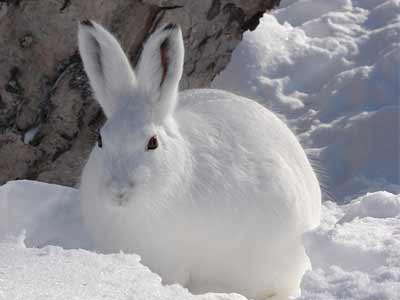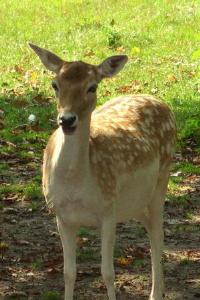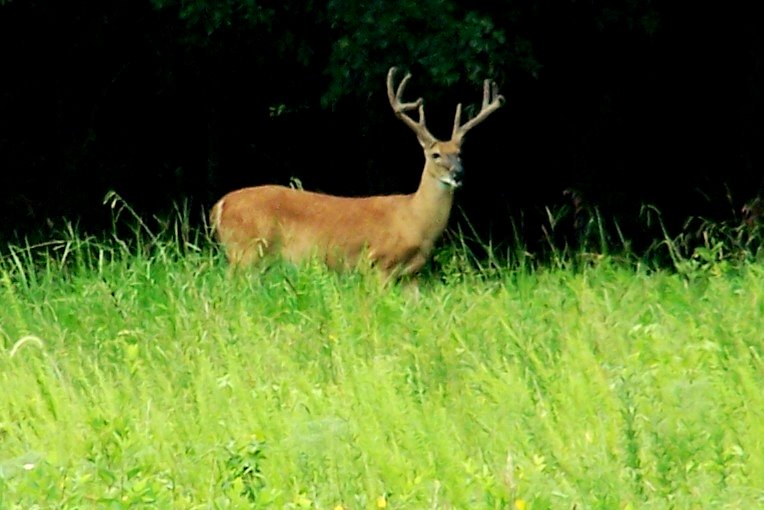
- •Астана 2012
- •Content
- •Introduction
- •Text 1: Hunting
- •1. Translate the following words into Russian:
- •2. Give Russian equivalents of the following word combinations:
- •3. Put special questions to the following sentences:
- •4. Give the definitions.
- •5. Retell the text Text 2: Hunting Methods for Beginners
- •Exercises
- •1. Translate the following words into Russian :
- •2. Give Russian equivalents of the following word combinations:
- •3. Put special questions to the following sentences:
- •4. Give the definitions:
- •5. Retell the text
- •Exercises
- •1. Translate the following words into Russian:
- •2. Give Russian equivalents of the following word combinations:
- •3.Put special questions to the following sentences:
- •4. Complete the following sentences:
- •5. Retell the text
- •Exercises
- •1. Translate the following words into Russian:
- •2. Give Russian equivalents of the following word combinations:
- •3. Put special questions to the following sentences:
- •4. Retell the text
- •Exercises
- •1. Translate the following words into Russian:
- •2. Give Russian equivalents of the following word combinations:
- •3. Put special questions to the following sentences:
- •4. Retell the text Text 6: Animals and birds of Kazakhstan
- •Exercises
- •1.Translate the following words into Russian.
- •2. Give Russian equivalents of the following word combinations:
- •3. Put special questions to the following sentences:
- •4. Give the definitions:
- •5. Retell the text
- •Exercises
- •1. Translate the following words into Russian.
- •2. Give Russian equivalents of the following word combinations:
- •3. Put special questions to the following sentences:
- •4. Give the definitions:
- •5. Retell the text
- •Exercises
- •1. Translate the following words into Russian:
- •2. Give Russian equivalents of the following word combinations:
- •3. Put special questions to the following sentences:
- •4. Give the definitions:
- •5. Retell the text Text 9: Birds of prey
- •Exercises
- •1. Translate the following words into Russian:
- •2. Give Russian equivalents of the following word combinations:
- •3. Put special questions to the following sentences:
- •4. Give the definitions:
- •5. Retell the text
- •1. Translate the following words into Russian:
- •2. Give Russian equivalents of the following word combinations:
- •3. Put special questions to the following sentences.
- •4. Give the definitions:
- •5. Retell the text
- •Exercises
- •1. Translate the following words into Russian:
- •2. Give Russian equivalents of the following word combinations:
- •3. Put special questions to the following sentences.
- •4. Give the definitions:
- •5. Retell the text Text 12: Wildlife
- •Exercises
- •1. Translate the following words into Russian:
- •2. Give Russian equivalents of the following word combinations:
- •3. Put special questions to the following sentences.
- •4. Retell the text
- •Exercises
- •1. Translate the following words into Russian:
- •2. Give Russian equivalents of the following word combinations:
- •3. Put special questions to the following sentences.
- •4. Retell the text
- •Exercises:
- •1. Translate the following words into Russian:
- •2. Give Russian equivalents of the following word combinations:
- •3. Put special questions to the following sentences.
- •4. Retell the text Text 15: Birds and Beasts of mountain and steppe
- •Exercises:
- •1. Translate the following words into Russian:
- •2. Give Russian equivalents of the following word combinations:
- •3. Put special questions to the following sentences.
- •Text 16: Birds and Beasts of mountain and steppe
- •Exercises:
- •1. Translate the following words into Russian:
- •2. Give Russian equivalents of the following word combinations:
- •3. Put special questions to the following sentences.
- •4. Give the definitions:
- •5. Retell the text texts for collateral reading Hare
- •Text 2: Deer
- •Text 3 Moose
- •Text 5: Marmots Baibak
- •Text 6: Environmental protection
- •Text 7: Reserves and National Parks
- •Грамматический справочник
- •1. Explain the use of Present Perfect in the following sentences and translate:
- •Break, buy, finish, do, go, go, lose, paint, read, and take
- •3. Mary is 65 years old. She has had an interesting life. Write sentences about the things she has done. Use the Present Perfect:
- •4. Write the verb in brackets in the present perfect form:
- •5. Ask again:
- •1. Look at these sentences and explain the difference between them:
- •2. Put the verb into the correct form, past perfect (I had done etc.) or past simple (I did etc.):
- •3. Finish the sentences:
- •4. Choose the correct tense:
- •5. Answer these questions using the past perfect. Start your answer with the word in bracket:
- •1. Translate these sentences into Russian:
- •2. Finish the following sentences:
- •3. Say what you will have done:
- •4. Make up the sentences and translate them:
- •5. Put the verbs in brackets in correct form:
- •1. Complete the sentences using one of these verbs in the correct form:
- •3. Put the verb into the correct form, present simple or past simple, active or passive:
- •4. Rewrite these sentences. Instead of using 'somebody/they/people' etc. Write a passive sentence:
- •5. Use the words below to write questions in the Passive. Answer them:
- •Infinitive of the Passive Voice
- •1. Rewrite these sentences. Instead of using 'somebody/they', write a passive sentence:
- •2. Make sentences from the words in brackets. Sometimes the verb is active, sometimes passive:
- •3. Turn these sentences into the Passive Voice:
- •Sequence of Tenses (Согласование времен)
- •1. Translate into your native language, pay attention to tenses:
- •2. Rewrite the following sentences in the Past tense:
- •3. Open the brackets and chose necessary tense:
- •Reported speech Косвенная речь
- •Reported Questions Вопросы в косвенной речи
- •Subjunctive mood Сослагательное наклонение
- •Образование форм сослагательного наклонения
- •Употребление сослагательного наклонения
- •Conditional sentences Условные предложения
- •Interrogative sentences Вопросительные предложения
- •Специальный вопрос.
- •Альтернативный вопрос.
- •Разделительный вопрос.
- •1. Read and translate the following questions. Answer them:
- •2. Put your own yes /no questions.
- •3. Alternative questions. Read, answer them and make up your questions:
- •4. Tail questions. Read and answer them. Put your own questions:
- •5. Put the words in the right order to ask a question and write true answers:
- •6. In each of the following sentences there is one mistake. Find it and correct it:
- •Linking words. (1) Слова – связки (1)
- •E.G.: I wake up at 7.00 and I switch on the radio.
- •Linking words (2) Слова – связки (2)
- •The Infinitive Инфинитив
- •I heard him sing – я слышал, как он поет.
- •Инфинитивные формы времени и залога
- •Употребление инфинитива
- •Инфинитив как член предложения
- •1. Insert the particle “to” before Infinitive, where necessary:
- •2. Translate into your native language, be attentive with Active Infinitive and Passive Infinitive:
- •3. Translate into your native language, be attentive with Perfect Infinitive:
- •4. Open the brackets, use necessary forms of Infinitive:
- •5. Change the parts of the sentences:
- •6. Open the brackets to insert the necessary forms of Infinitive:
- •7. Complete the sentences, using a verb given below:
- •The infinitive of purpose
- •2. Rewrite the sentences, using to – infinitive:
- •4. Tick the correct sentence:
- •6. Read the sentences about the past. Make negative sentences about the future:
- •The Gerund Герундий Герундиальные формы времени и залога
- •Употребление герундия
- •Герундий как член предложения.
- •1. Translate into your native language, be attentively with Gerund:
- •2. Complete these sentences, putting the verbs into the gerund and using one of the following prepositions. Some of them are used more than once:
- •3. Translate into your native language, be attentively with Gerund:.
- •4. Open the brackets, using the Gerund in active or passive forms:
- •5. Translate into your native language, pay attention to nouns and pronouns before the Gerund:
- •6. Fill the gaps with the gerund from the box. Use each verb once only:
- •7. Write these sentences, changing the verbs into gerunds:
- •8. Rewrite these sentences, starting with a gerund. You may need to change
- •10. Complete the sentences using the Gerund:
- •Revision for all materials
- •1 Variant
- •2 Variant
- •3 Variant
- •4 Variant
- •5 Variant
- •6 Variant
- •7 Variant
- •Examination tests test-1
- •Irregular verbs
- •Bibliograhpy
5. Retell the text texts for collateral reading Hare
Hare taken as a type of a fleet-footed and timid animal, the hare was traditionally supposed to sleep with its eyes open
Hare name for certain herbivorous mammals of the family Leporidae, which also includes the rabbit and pika . The name is applied especially to species of the genus Lepus,sometimes called the true hares. Hares generally have longer ears and hind legs than rabbits and move by jumping rather than by running. Unlike rabbits, hares are born covered with fur and with their eyes open. Hares are native to Eurasia, Africa, and North and Central America; they have been introduced into Australia in recent times. They range in weight from 3 to 13 lb (1.4-5.9 kg) and from 13 to 25 in. (33-63 cm) in length. They are usually brown or grayish in color, but northern species acquire a white coat in winter. Hares live in meadows, brushy country, and woodland clearings; they are largely nocturnal although they may forage in the day if undisturbed. Members of most species rest in shallow hollows, called forms, which they make in vegetation; they have regular trails from these forms to their feeding spots. Females make nests of their own fur for receiving the young. Hares feed on grasses, leaves, and bark. Like rabbits, they rein gest their own droppings so that food passes twice through the digestive system. Most North American hares are very large, with extremely long ears, and are called jackrabbits . Other North American species are the varying hare (or snowshoe rabbit), Lepus americanus, which ranges over the northern half of the continent; the Arctic hare, L. arcticus, found on the coasts and islands of the Arctic Ocean; and theAlaska, or tundra, hare, L. othus, found in N and W Alaska. The large brown hare, L. europaeus, is native to Europe, where it is valued as game. Introduced as a game animal in the NE United States, it has become an agricultural pest. The so-called Belgian hare is actually a domestic rabbit.Hares are classified in the phylum Chordata , subphylum Vertebrata, class Mammalia, order Lagomorpha, family Leporidae.

Text 2: Deer
 Deer
ruminant mammal of the family Cervidae, found in most parts of the
world except Australia.
Antlers, solid bony outgrowths of the skull, develop in the males of
most species and are shed and renewed annually. They are at first
covered by "velvet," a soft, hairy skin permeated by blood
vessels. The stem of the antler is called the beam, and the branches
are the tines. Antlers are used as weapons during breeding-season
combats between bucks. In deer that lack antlers (the musk
deer and
Chinese river deer), long upper canines serve as weapons. Deer are
polygamous. They eat a variety of herbaceous plants, lichens, mosses,
and tree leaves and bark.
Deer
ruminant mammal of the family Cervidae, found in most parts of the
world except Australia.
Antlers, solid bony outgrowths of the skull, develop in the males of
most species and are shed and renewed annually. They are at first
covered by "velvet," a soft, hairy skin permeated by blood
vessels. The stem of the antler is called the beam, and the branches
are the tines. Antlers are used as weapons during breeding-season
combats between bucks. In deer that lack antlers (the musk
deer and
Chinese river deer), long upper canines serve as weapons. Deer are
polygamous. They eat a variety of herbaceous plants, lichens, mosses,
and tree leaves and bark.
The white-tailed deer that live in woodlands throughout the United States and in Central America and North-South America was a source of food, buckskin, and other necessities for Native Americans and white settlers. Deer flesh, called venison, is still considered a delicacy. Slaughter through the years nearly exterminated the whitetail, but it is now restored in large numbers in the E United States and to a lesser extent in the West. In summer its upper parts are reddish brown, in winter grayish. The mule deer exists in reduced numbers from the Plains region westward, and the closely related black-tailed deer is a Pacific coast form.
O ld
World deer include the red deer, closely related to the North
American wapiti ,
the fallow deer, and the axis deer. The only deer in Africa are small
numbers of red deer found in the north in a forested area. The
barking deer, or muntjac, is a small deer of S Asia. A muntjac
discovered inNMyanmar (formerly Burma)
in 1997 is believed to be the smallest deer in the world. Called the
leaf deer, Muntiacus
putaoensis, it
stands about 20 in. (45 cm) at the shoulder. The misleadingly named
mouse deer, or chevrotain ,
is not a deer, but belongs to a related family (Tragulidae). Many
species of deer are threatened with extinction. Deer are classified
in the phylum Chordata ,
subphylum Vertebrata, class Mammalia, order Artiodactyla, family
Cervidae.
ld
World deer include the red deer, closely related to the North
American wapiti ,
the fallow deer, and the axis deer. The only deer in Africa are small
numbers of red deer found in the north in a forested area. The
barking deer, or muntjac, is a small deer of S Asia. A muntjac
discovered inNMyanmar (formerly Burma)
in 1997 is believed to be the smallest deer in the world. Called the
leaf deer, Muntiacus
putaoensis, it
stands about 20 in. (45 cm) at the shoulder. The misleadingly named
mouse deer, or chevrotain ,
is not a deer, but belongs to a related family (Tragulidae). Many
species of deer are threatened with extinction. Deer are classified
in the phylum Chordata ,
subphylum Vertebrata, class Mammalia, order Artiodactyla, family
Cervidae.
